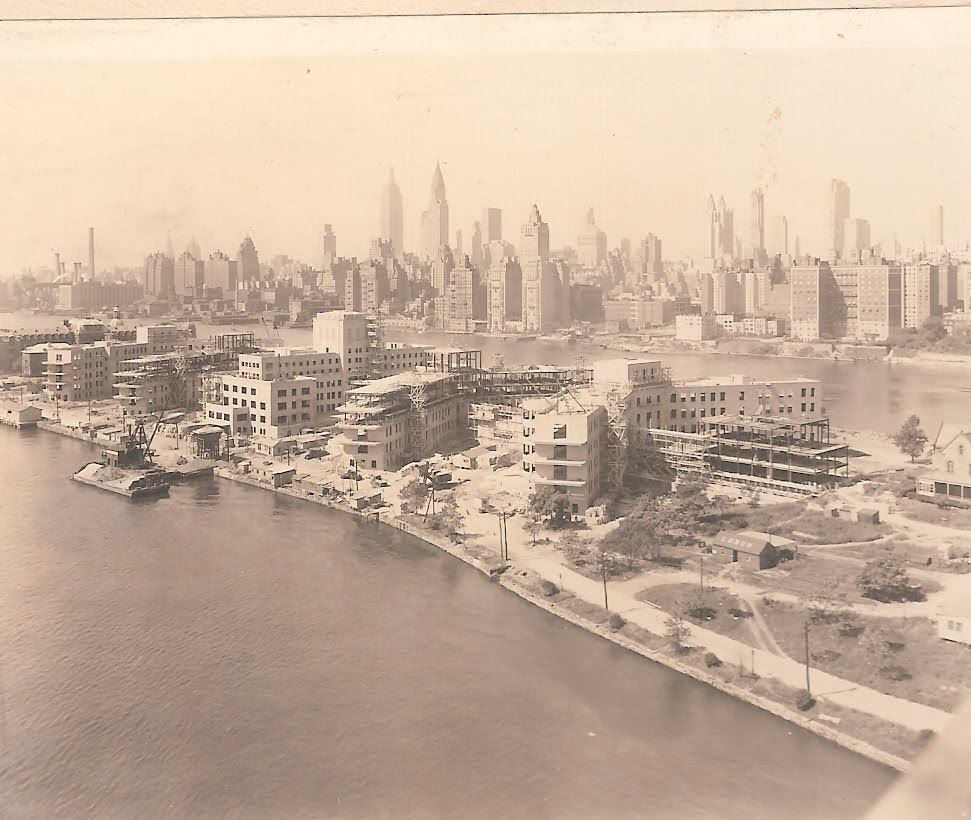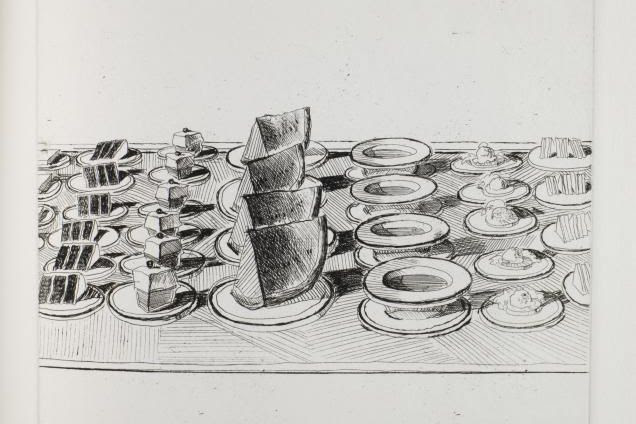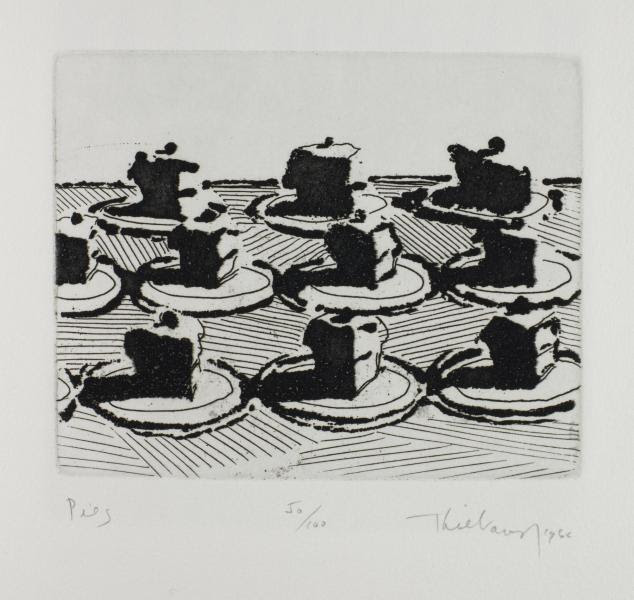Tuesday, August 25, 2020 – WAYNE THEIBAUD CONTEMPORARY ARTIST


TUESDAY, AUGUST 25th, 2020
The
139th Edition
From Our Archives
WAYNE THIEBAUD
ARTIST

Wayne Thiebaud, Jackpot Machine, 1962, oil on canvas, Smithsonian American Art Museum, Museum purchase made possible by the American Art Forum and gift of an anonymous donor, 1995.37
Thiebaud painted Jackpot Machine just as he broke into the national scene after years of surviving on commercial art and cartooning. A coin slot peers over the top edge of the machine like one wary eye. The one-armed bandit blocks the viewer’s path and the pay slot gapes as if to say “your money or your life.” But the image is as seductive as it is aggressive. Thiebaud believes that “painting is more important than art,” and he uses luscious paint to capture the jacked-up colors of California’s unabashedly commercial culture. Creamy strokes of red, white, and blue invite the viewer to follow the American dream, grab the handle and get rich quick, like all those who come to the West Coast looking for the prize. Only two out of three tokens line up, however, as if Thiebaud wanted to point out how random success can be. Exhibition Label, Smithsonian American Art Museum, 2006

Wayne Thiebaud, Gum Machine, from the book Delights, 1964/published 1965, etching on paper, Smithsonian American Art Museum, Gift of Mr. Frank Lobdell, San Francisco, 1992.43.9, (c) 1965, Wayne Thiebaud

Wayne Thiebaud, Candied Apples, from the book Delights, 1964/published 1965, etching on paper, Smithsonian American Art Museum, Gift of Mr. Frank Lobdell, San Francisco, 1992.43.12, (c) 1965, Wayne Thiebaud

Wayne Thiebaud, Cake Window, from the book Delights, 1964/published 1965, etching on paper, Smithsonian American Art Museum, Gift of Mr. Frank Lobdell, San Francisco, 1992.43.13, (c) 1965, Wayne Thiebaud

Wayne Thiebaud, Glassed Candy, from the Presidential Portfolio, 1980, color lithograph on paper, Smithsonian American Art Museum, Gift of the Democratic National Committee, 1981.174.6

Wayne Thiebaud, Renwick Gallery Tenth Birthday, color offset eproduction, Smithsonian American Art Museum, Gift of the Smithsonian Resident Associate Program, 1982.7
Wayne Thiebaud
is an American painter known for his colorful works depicting commonplace objects—pies, lipsticks, paint cans, ice cream cones, pastries, and hot dogs—as well as for his landscapes and figure paintings.
Thiebaud is associated with the pop art movement because of his interest in objects of mass culture, although his early works, executed during the fifties and sixties, slightly predate the works of the classic pop artists. Thiebaud uses heavy pigment and exaggerated colors to depict his subjects, and the well-defined shadows characteristic of advertisements are almost always included in his work. Contents 1
Thiebaud was born to Morton and Alice Thiebaud in Mesa, Arizona They moved a year later to Southern California where the family lived for most of Thiebaud’s childhood until he graduated from high school in Long Beach, California.[3] Thiebaud and his family were members of The Church of Jesus Christ of Latter-day Saints and his father was bishop when he was a teenager. Morton Thiebaud was a Ford mechanic, foreman at Gold Medal Creamery, traffic safety supervisor, and real estate agent.[2] One summer during his high school years he apprenticed at Walt Disney Studios drawing “in-betweens” of Goofy, Pinocchio, and Jiminy Cricket at a rate of $14 a week.[citation needed] The next summer he studied at the Frank Wiggins Trade School in Los Angeles. From 1938 to 1949, he worked as a cartoonist and designer in California and New York. He served as an artist in the First Motion Picture Unit of the United States Army Air Forces from 1942 to 1945.[4] In 1949, he enrolled at San Jose State College (now San Jose State University) before transferring to Sacramento State College (now California State University, Sacramento), where he earned a bachelor’s degree in 1951 and a master’s degree in 1952.

http://Wayne Thiebaud, Three Sandwiches, 1961, oil on canvas, Smithsonian American Art Museum, Gift of the Woodward Foundation, 1976.108.144

Wayne Thiebaud, Neapolitan Meringue, 1986/1999, pastel over trial proof lithograph on paper, Smithsonian American Art Museum, Gift of Warren Unna, Terry and Margaret Stent, and the Thiebaud Family, and museum purchase in honor of Nan Tucker McEvoy, 1999.80, © 1999, Paul Le Baron Thiebaud Title
Early life and education
From 1938 to 1949, he worked as a cartoonist and designer in California and New York. He served as an artist in the First Motion Picture Unit of the United States Army Air Forces from 1942 to 1945.[4] In 1949, he enrolled at San Jose State College (now San Jose State University) before transferring to Sacramento State College (now California State University, Sacramento), where he earned a bachelor’s degree in 1951 and a master’s degree in 1952. Early career Thiebaud subsequently began teaching at Sacramento City College. In 1960, he became assistant professor at the University of California, Davis, where he remained through 1991 and influenced numerous art students.
He continues to hold a Professor Emeritus title there. Thiebaud did not have much of a following among Conceptual artists because of his adherence to basically traditional disciplines, emphasis on hard work as a supplement to creativity, and love of realism. Occasionally, he gave pro bono lectures at U.C. Davis. On a leave of absence during 1956–57, he spent time in New York City, where he became friends with Elaine and Willem de Kooning
and Franz Kline, and was much influenced by these abstractionists as well as by proto-pop artists Robert Rauschenberg and Jasper Johns. During this time, he began a series of very small paintings based on images of food displayed in windows, and he focused on their basic shapes.
Returning to California, he pursued this subject matter and style, isolating triangles, circles, squares, etc. He also co-founded the Artists Cooperative gallery, now Artists Contemporary Gallery, and other cooperatives including Pond Farm, having been exposed to the concept of cooperatives in New York. In 1960, he had his first solo show in San Francisco at the San Francisco Museum of Modern Art, and shows in New York City at the Staempfli and Tanager galleries. These shows received little notice, but two years later, a 1962 Sidney Janis Gallery exhibition in New York officially launched Pop Art, bringing Thiebaud national recognition, although he disclaimed being anything other than a painter of illusionistic form. In 1961,
Thiebaud met and became friends with art dealer Allan Stone (1932–2006), the man who gave him his first “break.”[4] Stone was Thiebaud’s dealer until Stone’s death in 2006.[5] Stone said of Thiebaud “I have had the pleasure of friendship with a complex and talented man, a terrific teacher and cook, the best raconteur in the west with a spin serve, and a great painter whose magical touch is exceeded only by his genuine modesty and humility. Thiebaud’s dedication to painting and his pursuit of excellence inspire all who are lucky enough to come in contact with him. He is a very special man.”
After Stone’s death, Thiebaud’s son Paul Thiebaud (1960–2010) took over as his dealer. Paul Thiebaud was a successful art dealer in his own right and had eponymous galleries in Manhattan and San Francisco; he died June 19, 2010. In 1962, Thiebaud’s work was included, along with Roy Lichtenstein, Andy Warhol, Jim Dine, Phillip Hefferton, Joe Goode, Edward Ruscha, and Robert Dowd, in the historically important and ground-breaking “New Painting of Common Objects,” curated by Walter Hopps at the Pasadena Art Museum (now the Norton Simon Museum at Pasadena).[6] This exhibition is historically considered one of the first Pop Art exhibitions in America. These painters were part of a new movement, in a time of social unrest, which shocked America and the art world. In 1963, he turned increasingly to figure painting: wooden and rigid, with each detail sharply emphasized. In 1964, he made his first prints at Crown Point Press, and has continued to make prints throughout his career. In 1967, his work was shown at the Biennale Internationale.

Wayne Thiebaud, Levee Farms, 1998, oil on canvas, Smithsonian American Art Museum, Gift of Sam Rose and Julie Walters, 2004.30.4 The vantage point of Levee Farms is that of a low-flying bird as it surveys planting fields and a river suffused with the warm light of the California sun. A tour de force of curving lines, gentle color, and subtle shadows describe fields that follow the contours of the river as it flows toward the delta. Here, Thiebaud toyed with perspective–there is no horizon line, for example–and manipulates space to celebrate the confluence of man in harmony with the natural world. Title Levee Farms Artist Wayne Thiebaud Date 1998 Location Smithsonian American Art Museum 2nd Floor North Wing Dimensions.
Wayne Thiebaud, Lunch Counter, from the book Delights, 1964/published 1965, etching on paper, Smithsonian American Art Museum, Gift of Mr. Frank Lobdell, San Francisco, 1992.43.7, (c) 1965, Wayne Thiebaud
Wayne Thiebaud, Pies, from the book Delights, 1964/published 1965, etching and aquatint on paper, Smithsonian American Art Museum, Gift of Mr. Frank Lobdell, San Francisco, 1992.43.15, (c) 1965, Wayne Thiebaud
TUESDAY PHOTO OF THE DAY
SEND OUR SUBMISSION TO ROOSEVELTISLANDHISTORY@GMAIL.COM
WIN A KIOSK TRINKET

MONDAY PHOTO OF THE DAY
Iced coffee, light at Cornell Tech Cafe
WINNER #1 LISA FERNANDEZ
WINNER #2 JAY JACOBSON
WINNER #3 ALEXIS VILLEFANE

CLARIFICATION
WE ARE HAPPY TO GIVE WINNERS OF OUR DAILY PHOTO IDENTIFICATION A TRINKET FROM THE VISITOR CENTER.
ONLY THE PERSON IDENTIFYING THE PHOTO FIRST WILL GET A PRIZE.
WE HAVE A SPECIAL GROUP OF ITEMS TO CHOOSE FROM. WE CANNOT GIVE AWAY ALL OUR ITEMS,. PLEASE UNDERSTAND THAT IN THESE DIFFICULT TIMES,
WE MUST LIMIT GIVE-AWAYS. THANK YOU
A NEW FEATURE
FROM OUR KIOSK
GREAT STUFF FOR ALL OCCASIONS

HISTORIC MAPS AND VIEWS OF NEW YORK
$22-
KIOSK IS OPEN WEEKENDS 12 NOON TO 5 P.M.
ONLINE ORDERS BY CHARGE CARD AT
ROOSEVELTISLANDHISTORY@GMAIL.COM
EDITORIAL
I am craving different foods so the art of Wayne Theibaud is perfect for me, It is delicious looking and is calorie free.
Judith Berdy
jbird134@aol.com
Text by Judith Berdy
Thanks to Bobbie Slonevsky for her dedication to Blackwell’s Almanac and the RIHS
Thanks to Deborah Dorff for maintaining our website
Edited by Melanie Colter and Deborah Dorff
All image are copyrighted (c)
Roosevelt Island Historical Society
unless otherwise indicated
IMAGES COURTESY OF THE SMITHSONIAN AMERICAN ART MUSEUM AND ARE COPYRIGHTED (C)
FUNDING PROVIDED BY ROOSEVELT ISLAND OPERATING CORPORATION PUBLIC PURPOSE GRANTS
CITY COUNCIL REPRESENTATIVE BEN KALLOS DISCRETIONARY FUNDING THRU DYCD


Copyright © 2020 Roosevelt Island Historical Society, All rights reserved.Our mailing address is:
rooseveltislandhistory@gmail.com



Leave a comment